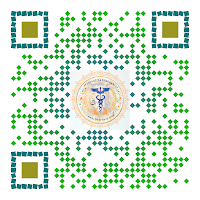Ionized
calcium is the physiologically active form. Ionized calcium acts as an
intracellular 2nd messenger; it is involved in skeletal muscle contraction,
excitation-contraction coupling in cardiac and smooth muscle, and activation of
protein kinases and enzyme phosphorylation. Calcium is also involved in the
action of other intracellular messengers, such as cAMP (cyclic adenosine
monophosphate) and inositol 1,4,5-triphosphate, and thus mediates the cellular
response to numerous hormones, including epinephrine, glucagon, vasopressin
(antidiuretic hormone), secretin, and cholecystokinin.
Despite
its important intracellular roles, about 99% of body calcium is in bone, mainly
as hydroxyapatite crystals. About 1% of bone calcium is freely exchangeable
with the extracellular fluid and, therefore, is available for buffering changes
in calcium balance.
Normal
total serum calcium concentration ranges from 8.8 to 10.4 mg/dL. About 40% of
the total blood calcium is bound to plasma proteins, primarily albumin. The
remaining 60% includes ionized calcium plus calcium complexed with phosphate
and citrate. Total calcium (ie, protein-bound, complexed, and ionized calcium)
is usually what is determined by clinical laboratory measurement.
However,
ideally, ionized (or free) calcium should be estimated or measured because it
is the physiologically active form of calcium in plasma and because its blood
level does not always correlate with total serum calcium.
Ionized
calcium is generally assumed to be about 50% of the total serum calcium.
Ionized
calcium can be estimated, based on total serum calcium and serum albumin levels.
Direct determination of ionized calcium, because of its technical difficulty,
is usually restricted to patients in whom significant alteration of protein
binding of serum calcium is suspected.
Normal
ionized serum calcium concentration range varies somewhat between laboratories,
but is typically 4.7 to 5.2 mg/dL.
The regulation of both calcium and phosphate balance
is greatly influenced by concentrations of circulating PTH, vitamin D, and, to
a lesser extent, calcitonin. Calcium and phosphate concentrations are also
linked by their ability to chemically react to form calcium phosphate. The
product of concentrations of calcium and phosphate (in mg/dL) is estimated to
be < 60 mg2/dL2 (< 4.8 mmol2/L2) normally; when the product exceeds 70
mg2/dL2 (5.6 mmol2/L2), precipitation of calcium phosphate crystals in soft
tissue is much more likely. Calcification of vascular tissue accelerates
arteriosclerotic vascular disease and may occur when the calcium and phosphate
product is even lower (> 55 mg2/dL2 [4.4 mmol2/L2]), especially in patients
with chronic kidney disease.











.png)





